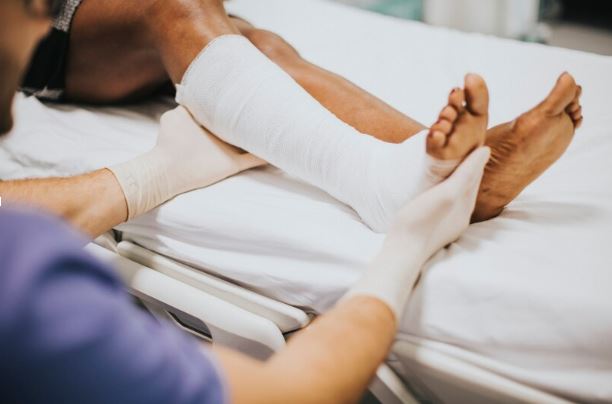Everything You Need to Know about Fractures? – Dr. Sandeep Singh
A bone fracture is a rupture within the bone’s continuity. Increased force effect or stress causes a considerable portion of bone fractures.
On the other hand, a fracture can occur due to certain medical conditions that weaken the bones.
Osteoporosis and certain types of cancer are among them. A pathological fracture is a medical term for this.
In this article, Dr. Sandeep Singh, who provides an incredible fracture treatment in Bhubaneswar, discusses the various types of bone fractures, their causes, and treatment options.
Contents
What is a bone fracture?
A full or partial break in the continuity of bone tissue is known as a bone fracture. Any bone in the body can be fractured.
A bone can be fractured in several different ways. A closed fracture, for example, is a bone break that does not tear the skin or injure surrounding tissue.
On the other hand, a compound fracture damages the surrounding tissue and penetrates the skin.
Because of the risk of infection, compound fractures are usually more severe than simple fractures.
Types
According to Dr. Sandeep Singh, an excellent orthopedic specialist from Bhubaneswar, there are several other types of fractures, such as:
- Avulsion fracture: It occurs when a muscle or ligament pulls on the bone, causing it to fracture.
- Comminuted fracture: It happens when the bone is shattered into many pieces due to an impact.
- Compression, or crush, fracture: It occurs most commonly in the spongy bone of the spine. Osteoporosis, for example, can cause the front portion of a vertebra to collapse.
- Fracture dislocation: This occurs when a joint dislocates, and one of the bones of the joint fractures.
- Greenstick fracture: The bone partially fractures on one side but does not break entirely because the rest of the bone can bend.
- Hairline fracture: This is a partial fracture of the fragile bone.
- Impacted fracture: When a bone fractures, a piece of the broken bone may collide with another bone.
- Intra-articular fracture: This occurs when a fracture extends into the surface of a joint.
- Longitudinal fracture: When a fracture runs the length of a bone, it is called a longitudinal fracture.
- Oblique fracture: An oblique fracture occurs when a bone’s long axis is broken in the opposite direction.
- A pathological fracture: This happens when an underlying disease depletes the bone and induces a fracture.
- Spiral rupture: Here, at least a single piece of the bone twists during a break.
- Stress fracture: It occurs when a bone is repeatedly stressed and strained. This is a common occurrence among athletes.
- Transverse fracture: This is a break in the bone that runs straight across it.
Symptoms
The severity of a fracture is determined by the location of the fracture, the person’s age and general health, and the severity of the injury.
People who have a bone fracture, on the other hand, are likely to experience the following symptoms:
- Pain
- Swelling
- Bruising
- Discolored skin around the affected area
- Protrusion of the affected area at an unusual angle
- Inability to put weight on the injured area
- Inability to move the affected area
- A grating sensation in the affected bone or joint
- Bleeding if it is an open fracture
A person may experience the following symptoms in more severe cases:
- Dizziness
- Faintness or lightheadedness
- Nausea
Causes
Healthy bones are incredibly tough and can withstand a surprising amount of force. They may, however, crack or break if subjected to enough force.
Bone fractures are caused by physical trauma, overuse, and health conditions that weaken the bones, such as osteoporosis.
Other factors can also increase a person’s chances of breaking a bone.
A person’s bones typically weaken with age, increasing the risk of breaking.
As a person gets older, the chances of developing a bone-weakening condition increase.
also read: Safe & Cost-effective root canal treatment – Dr. Suhrab Singh, Noida.
Treatment and diagnosis
According to Dr. Sandeep Singh, a remarkable orthopedic surgeon from Bhubaneswar, a doctor will investigate the circumstances that led to a person’s fracture. They’ll then conduct a physical examination to make a diagnosis.
To fully assess the fracture, they will frequently order an X-ray and, in some cases, an MRI or CT scan.
Bone healing is a natural process that occurs in the majority of cases.
As a result, treatment usually focuses on creating the best conditions for the injured bone to heal and ensure optimal future function.
A doctor will reduce the fracture, allowing the natural healing process to begin.
Also, this entails lining up the broken bones’ ends. A specialist can do this in minor fractures by controlling the affected site externally.
However, in some cases, surgery may be required.
Once the fracture has been aligned, a medical professional will ensure it stays in place. Methods of doing so include:
- Metal plates and screws
- Casts or braces
- External fixings
- Intramedullary nails, or rods, placed in bone cavities
Depending on their severity, fractures can take several weeks to months to heal.
The length of time depends on which bone has been affected and any complications, such as a blood supply issue or infection.
Other factors that can affect bone healing include:
- Smoking
- Excessive alcohol consumption
- A high body mass index
- Nonsteroidal anti-inflammatory drug use
- A person’s age
After the bone has healed, physical therapy may be required to regain muscle strength and mobility in the affected area.
Permanent stiffness or arthritis is possible if the fracture occurs near or through a joint. A person may not bend that joint before the injury if this happens.
Complications
While most bone fractures heal well with the proper treatment, there are some risks, such as:
- Bone heals in an incorrect position: It’s possible that a fracture will heal incorrectly or that the bones will shift during the healing process.
- Disruption of bone growth: If the healing of a childhood bone fracture is disrupted, it may affect the bone’s normal development. This can put you at risk of developing a bone deformity in the future.
- Infection of the bone or bone marrow: Bacteria can enter a compound fracture through a skin break and infect the bone or bone marrow. This can turn into a long-term infection.
- Bone death (avascular necrosis): It occurs when a bone loses its vital blood supply.
Non-unions and delayed unions
Fractures that do not heal properly are called non-unions, while delayed unions take longer to heal.
Non-unions and delayed unions can receive the following treatments:
- Ultrasound therapy: A doctor will use low-intensity ultrasound on the affected site. This may help fractures heal.
- Bone graft: If the rupture does not cure, a specialist will transplant a natural or synthetic bone to stimulate the broken bone.
- Stem cell therapy: Therapies derived from stem cells may help bone fractures heal faster.
Prevention
Various remedies and lifestyle changes can reduce a person’s risk of bone fractures.
A person’s diet can influence their fracture risk. Calcium is required by the human body to maintain healthy bones. Calcium is found in:
- Milk
- Cheese
- Yogurt
- Dark green leafy vegetables
According to Dr. Sandeep Singh, a highly skilled orthopedic doctor from Bhubaneswar, Vitamin D is also required for calcium absorption. Vitamin D can be obtained through exposure to sunlight and eggs, and oily fish consumption.
Weight-bearing exercises can aid in the development of muscle mass and bone density. Both of these things can help you avoid bone fractures.
Regular exercise and a well-balanced diet have been shown in studies to lower the risk of fracture in people with osteoporosis.
Furthermore, estrogen levels, important for bone health, plummet during menopause.
Calcium regulation becomes more complex, increasing the risk of osteoporosis and fractures.
As a result, people should pay special attention to their bone density and strength during and after menopause.
Summary
A fracture is a break in a bone’s continuity. Fractures can occur in any bone and range from small partial cracks to complete breaks.
Fractures are most commonly caused by physical trauma, overuse, and diseases like osteoporosis.
In addition, by late adulthood, bones are usually weaker. This raises their chances of breaking a bone.
The body can repair most fractures, but medical intervention is usually required to keep the broken bones in place.
External casts and splints, as well as surgical screws and plates, are examples of these interventions.


